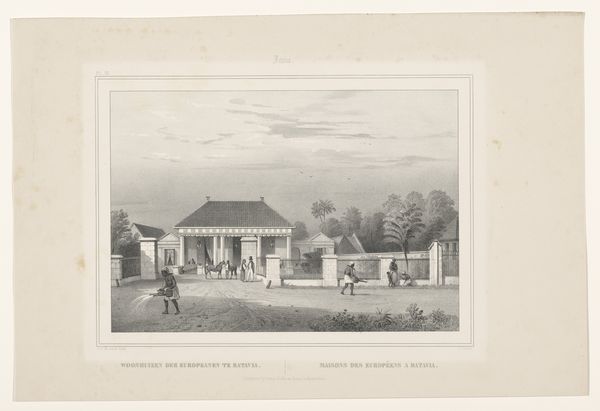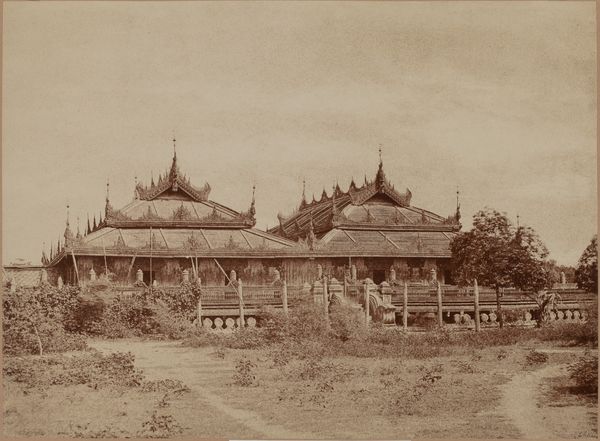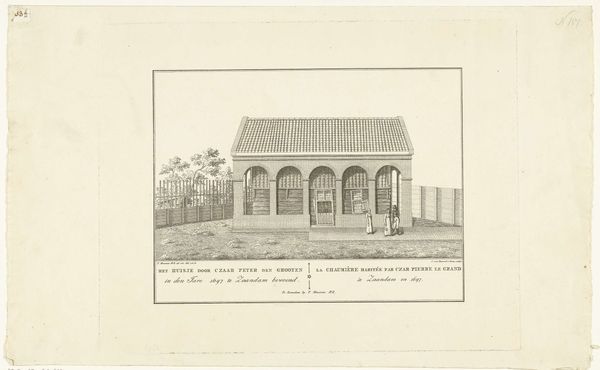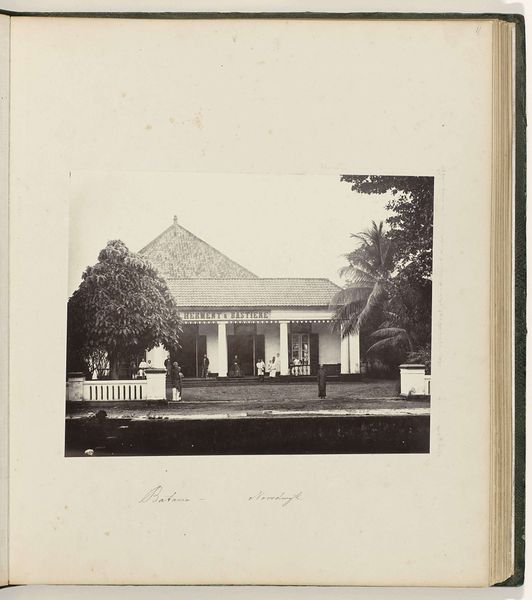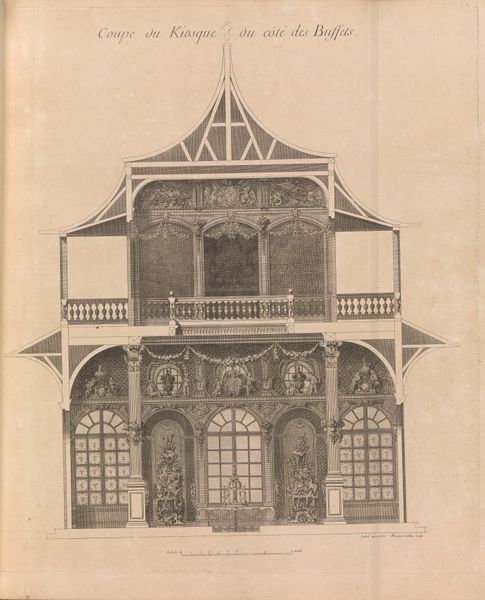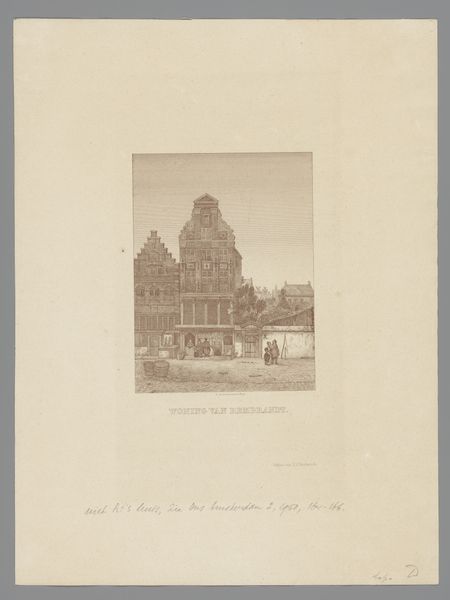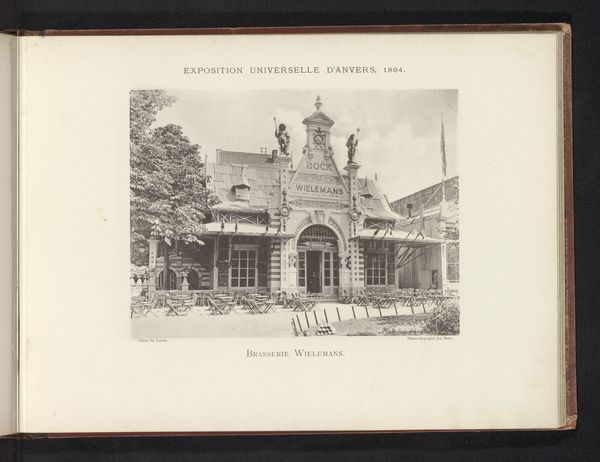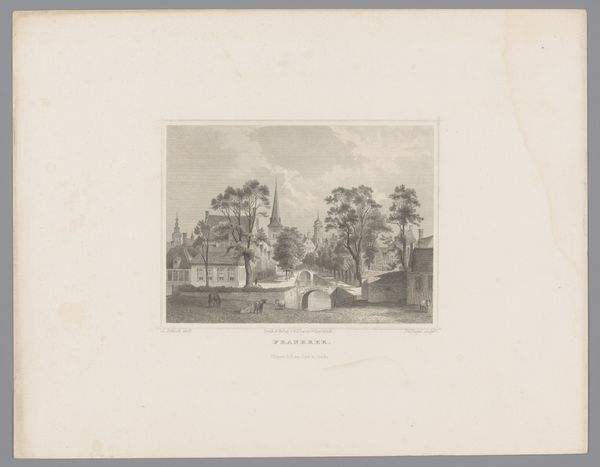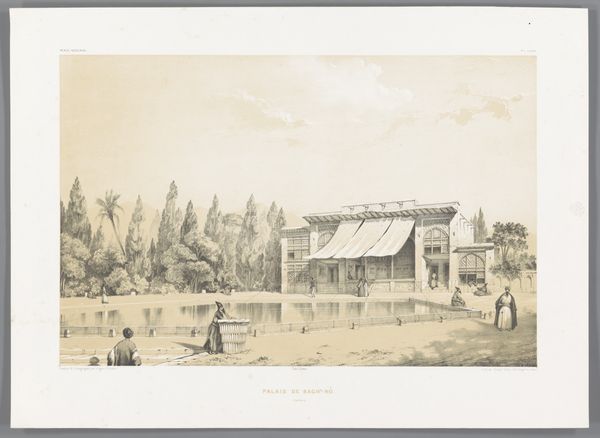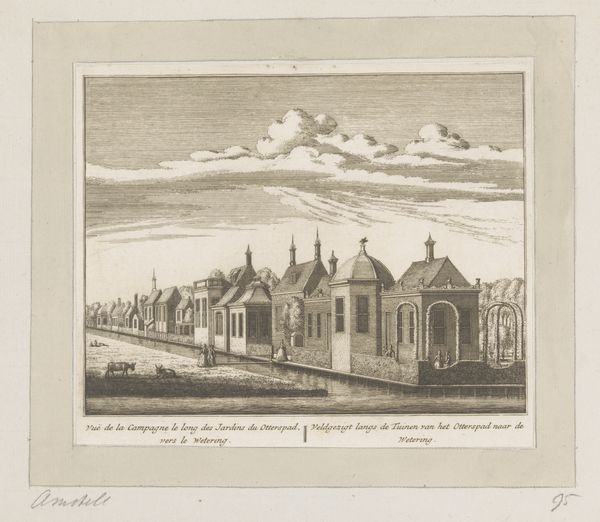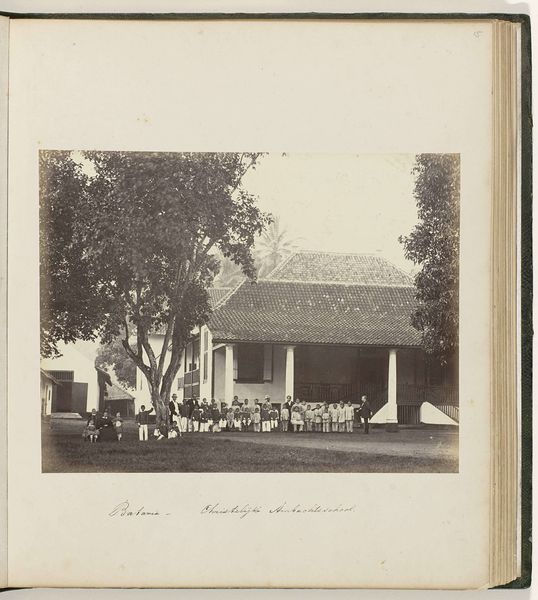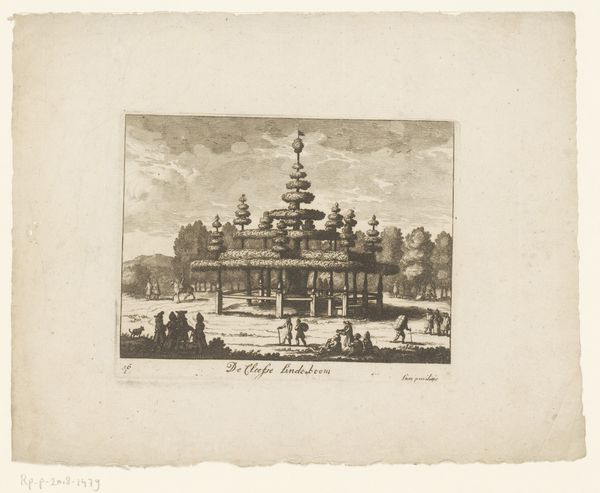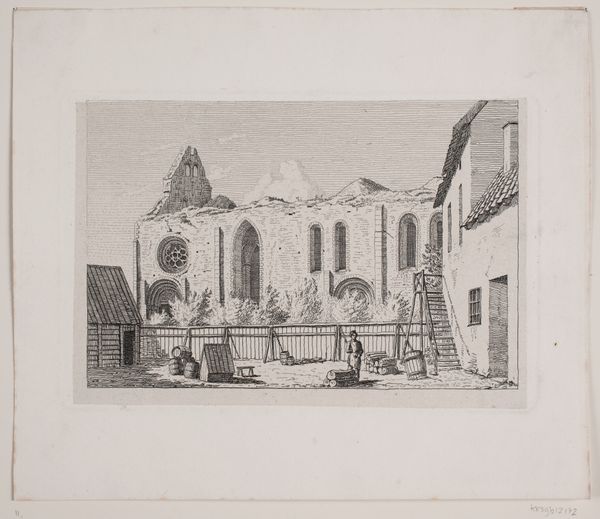
photography, albumen-print, architecture
#
asian-art
#
landscape
#
photography
#
orientalism
#
albumen-print
#
architecture
#
building
Dimensions: 14.6 x 22.8 cm (5 3/4 x 9 in.)
Copyright: Public Domain
Curator: What a striking image! This is Émile Gsell's "Pagode de la Ville Chinoise," an albumen print taken in 1866 in Saigon. Editor: It's...stark. The light and shadow create such rigid geometric forms. The almost severe symmetry lends a feeling of immense control. Curator: Indeed. Gsell masterfully uses the architectural elements to guide the viewer’s eye. Notice how the fence in the foreground creates a horizontal base, anchoring the composition and setting up a clear separation between the viewer and the subject. Editor: It’s almost a barrier. I see the pagoda’s delicate roof ornaments silhouetted against the pale sky, those mythical beasts seem to both protect and observe the space. Are those dragons? Their presence feels significant. Curator: Undoubtedly. Dragons in Vietnamese culture are powerful symbols of imperial authority, good fortune, and spiritual energy. Their placement along the roofline reinforces the pagoda’s importance as both a sacred and cultural site. Editor: And that careful framing! The way Gsell positions the camera to capture the full facade, emphasizing its ordered complexity… It reminds me of how architectural photography was often used to document and categorize structures. This image speaks to both an appreciation of Eastern aesthetics and perhaps a subtly colonial gaze? Curator: An insightful point. Consider the albumen print itself – a popular method at the time for its detail, creating this highly structured image that also allows for easy reproduction, in this case showcasing what was then French Cochinchina. Editor: So, what seems at first a simple architectural portrait actually contains layers of cultural, historical, and even political meaning. I find the convergence of representation and reality within the albumen print medium deeply thought-provoking, framing a moment for eternity, for our analysis now. Curator: Precisely. The power of such a moment lies in Gsell’s capacity to merge documentary with symbolic weight, creating an image that stays long in the memory.
Comments
No comments
Be the first to comment and join the conversation on the ultimate creative platform.
